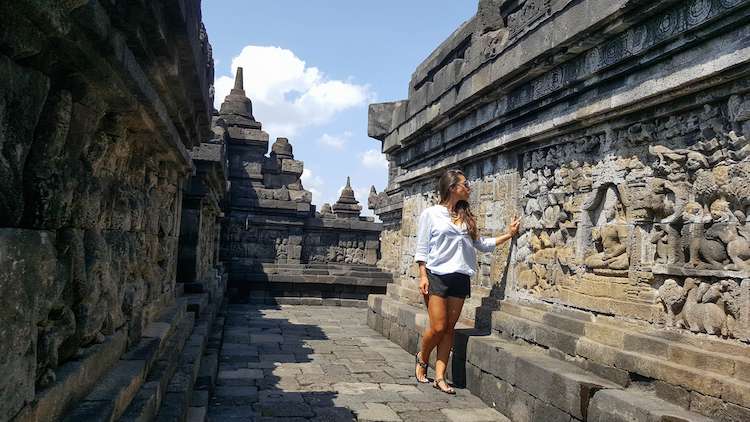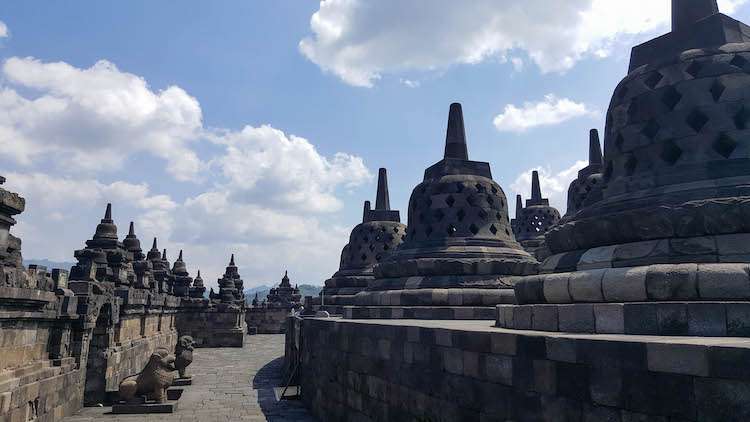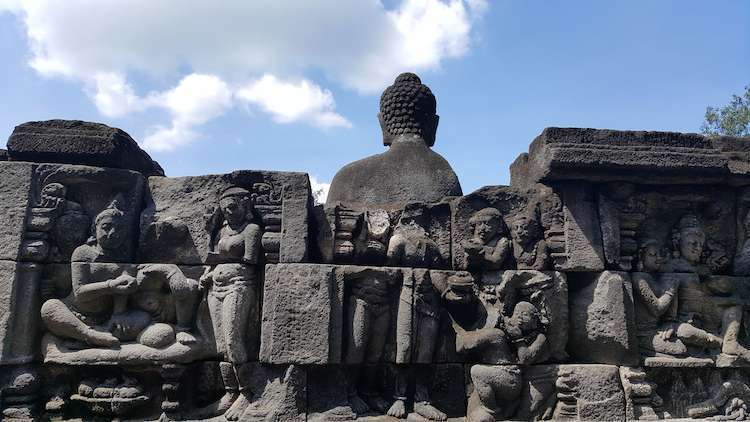The Borobudur Temple is the world’s largest and single-piece Buddhist temple. Please refrain from comparing it to Angkor Wat in Cambodia, as Angkor Wat is not just a temple but a complex. Located 40 km northwest of the city of Yogyakarta, the temple was designated a UNESCO World Heritage Site in 1991.
According to official records, the builder and purpose behind Borobudur are not definitively known. Based on available information, it is believed that the construction year was around 750 AD during the Sailendra dynasty’s period. The construction is estimated to have taken around 75 years and was completed during the reign of King Samaratungga in around 825 AD.

The structure, abandoned and even forgotten by the local population, remained hidden under volcanic ash for centuries until it was rediscovered in 1814 by Sir Stamford Raffles. The initial restoration efforts were initiated by the Dutch, followed by an 11-year restoration process supported by UNESCO (with 25 million dollars), ultimately reclaiming it for humanity. In 1991, it was inscribed on the UNESCO World Heritage List.
Around 2 million blocks of rock, each weighing 40 kilograms, were individually numbered and meticulously placed during the restoration process. Within these 2 million stone blocks, there are 504 Buddha statues, 2,760 relief panels, and 72 stupas around the main dome. When viewed from above, the structure’s mandala shape becomes very apparent.

Inside the temple, you will notice that many of the Buddha statues are missing their heads. Most of these have either been damaged due to earthquakes or stolen.
All the statues you will see inside the temple are original. All the Buddha statues have elongated ears and are in a cross-legged (sukhasana) position. According to Chinese beliefs, long ears signify a long life. In some countries, we encounter the Big Buddha, a plump and smiling Buddha. However, all the statues here depict meditating Buddhas.
Local people have made their homes from the walls of the temple. Despite the original wall color being black, yellow stones were used for restoration, making it quite clear where the restoration has taken place.

The structure doesn’t have any rooms; it consists of 9 main sections and 3 levels, forming an open central space. If you plan to explore each level, keep in mind that you’ll be walking a total of 5 km.
On thousands of panels, scenes from Siddhartha Gautama Buddha’s life, fables, Hindu rituals (for example, reliefs depicting people with flowers, fire, and water in front of stupas), and most importantly, a different message and teachings related to Buddha’s life are portrayed. What you take away from each relief depends on your perspective and understanding. However, if you pay attention, you’ll notice that the reliefs found on the lower levels are missing on the top level. This is because the top level is considered the place of reaching nirvana. Many artists requested to continue the reliefs, but their requests were denied due to the uniqueness of each facial expression and the uncertainty about how to proceed.
The depiction of elephant figures in the reliefs raises questions, as there are no elephants in the Java region. It’s intriguing why these figures were included.
Inside the temple, there are a total of two inscriptions in Sanskrit. One of them is located on the corner to the right when you face the lion statue at the entrance of the temple.
Note: You can dress as you like before visiting the temple. Wearing shorts or sleeveless attire won’t require you to be given a sarong to cover up.
Entrance Fee: Entrance fee of 355,000 IDR is required. The student fee is 210,000 IDR. If you have a student card, be sure to bring it with you.
Visiting Hours: Between 04.30 AM to 5:00 PM
You can find information about the park’s entrance fee, rules, and other details on the official Borobudur website.
Read all articles about Indonesia
